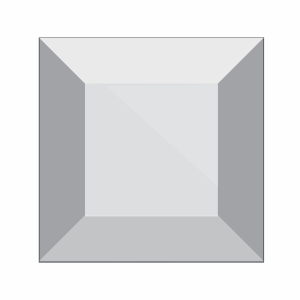There is an incredibly vast array of materials available when it comes to choosing floor and wall tiles, so much so that it can be overwhelming at times. To make life easier, we’ve put together a quick guide to the different tile materials available, how they differ, and where they are most commonly used.
Ceramic tiles
Ceramic tiles are the most common type and the one everyone first thinks of. Manufactured through baking tiles with glazing in a kiln, they have been used for hundreds of years and are still incredibly popular. Widely used for various applications due to their durability and easy maintenance, they inject personality and taste into your space in a breeze with ceramic tiles. However, when it comes to bathroom floors, it’s worth noting that they may not be the best choice as they are not as slip-resistant as other floor tiles and will require a slip-resistant mat. With that said, ceramic tiles used in areas like kitchens or hallways are tough and can withstand impacts well.
Maintenance of ceramic tiles is a breeze; they only require the occasional mop. Manufacturers typically recommend re-sealing or re-treating every 3 to 4 years, if necessary. Small scratches on the surface can be buffed out thanks to the glaze sitting on top of a ceramic base, ensuring the integrity of the entire tile isn’t compromised.
When it comes to using ceramic tiles around fireplaces or wood burners, you’re in luck! They boast heat resistance, making them suitable for creating a stunning finishing touch in these areas. Just remember to use heat-resistant adhesive and grout. A textured slate-effect tile behind a fireplace or wood burner can give you that trendy ‘woodland cabin’ effect.
Ceramic tiles offer homeowners endless possibilities for expression, with various finishes, designs, and laying patterns available. From single-coloured tiles to patterned Victorian ceramic tiles, the options are limitless, allowing you to create unique flooring designs that suit your style. A common misconception is that all ceramic glazed tiles are shiny. In reality, the shine or matt finish depends on the type of glazing used. Gloss tiles reflect light, making small rooms appear more spacious, while matt glazed tiles provide a more natural, slip-resistant finish, making them ideal for flooring.
Porcelain tiles
Porcelain tiles are another commonly recognised form of tile, that is similar to ceramic but stronger, harder and more water resistant. Porcelain tiles are manufactured in the same way as ceramic tiles, but the clay used has much finer particles, and the temperature in the kiln is much higher. This method increases the hardness, but also makes them more impervious – meaning moisture will not affect them. This makes them great for flooring in areas of high traffic, but they also look great on walls.
Again, with porcelain tiles, there is a wide range of styles and designs available, from marble effect tiles to more traditional patterned tiles and even wood-effect. Unglazed porcelain tiles have no glazing on top, meaning the whole tile is made from one material. This makes them extra durable and resistant, and so is often the flooring material of choice for restaurants, cafes and other busy floors.
 Natural stone tiles
Natural stone tiles
Natural stone tiles are timeless, long-lasting and traditional, and growing in popularity. Sourced from quarries all around the world, natural stone tiles are made from stones including marble, granite, sandstone and limestone, and have been used for centuries.
Natural stone flooring and tiles give your home a luxurious and elegant feel, whilst having natural imperfections and variations running through them to add a unique style. Natural stone tiles are easy to maintain, incredibly durable and work well with underfloor heating.
Encaustic tiles
Encaustic tiles are patterned tiles whereby the pattern has been created using different coloured clays, instead of being the result of glazing. Encaustic tiles can have as few as two pieces of different clay, or up to six or seven different pieces of clay inlaid to create a stunning decorative look.
Encaustic tiles are a great way to create flooring with geometric patterns which is becoming increasingly popular throughout the home. Encaustic tiles work particularly well in high-traffic areas such as hallways because the design remains when the tiles get worn down, unlike glazed tiles where the glazing can be worn down and the pattern disappears.
Glass tiles
Glass tiles, although often only thought of as big panels of clear glass, come in a range of different styles and finishes, and are a great way to add something different to your home. Most commonly used on splashbacks, dividers and feature panels, glass tiles can brighten a room.
Glass tiles are most commonly used in mosaics, with really small pieces of glass in either a single colour or multiple colours to form a feature piece. This could be as a runner around the bathroom, a border around a floor, or a wall feature.
 Concrete tiles
Concrete tiles
Concrete tiles are becoming increasingly popular flooring options throughout the home. As more industrial and minimalist trends grow, so does the desire for monochrome, dramatic flooring options such as brushed and polished concrete.
Concrete tiles are now primarily being used in kitchens, both on kitchen walls and floors, to create that contemporary and industrial interior that is becoming increasingly popular.














